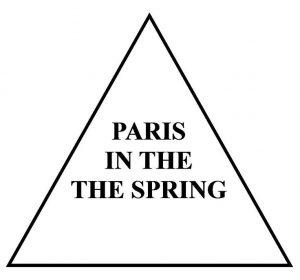Both, top-down and bottom-up processing are the two famous approaches on how we interpret information in cognitive psychology and as humans, we do both.
Please read the sentence below:

Now read again.
Have you skipped over the extra “the” or did you read the line for what it is?
Let’s be honest: We almost all skipped over the extra „the“ and the reason why we do this is that we do use top-down processing, which is one of two ways we are interpreting information about the world.
Top-down or conceptually-driven processing simply means that the processing is hugely influenced by the individual’s expectations which are based on previous knowledge rather than by the stimulus itself. The latter is called bottom-up or data-driven processing which means interpreting the stimulus solely for what it is.
There are many examples out there that we use top-down processing in combination with bottom-up processing – for example, read the following sentence:
„It dseno’t mtaetr in waht oerdr the ltteres in a wrod are, the olny iproamtnt tihng is taht the frsit and lsat ltteer be in the rghit pclae“.
Fun fact, which also proves we are using top-down processing: If your English is weak (or you’re not a native speaker), you might have a much harder time reading this sentence correctly as someone who speaks English fluidly: she could easily read this paragraph without hesitation. If you are German you might fluidly read a similar example in German:
„Gmäeß eneir Sutide eneir elgnihcesn Uvinisterät ist es nchit witihcg, in wlecehr Rneflogheie die Bstachuebn in eneim Wrot snid, das ezniige, was wcthiig ist, ist, dass der estre und der leztte Bstabchue an der ritihcegn Pstoiion snid“
So we see, how we process information is determined on previous knowledge and expectations, and how we process information is also guiding where our attention goes (there are several other ways such as priming and other biases but we’ll omit that by now). For example, there is this famous young woman/old lady illusion which is one of the best examples of perceptual expectancy:

Whether we see an old woman or the young lady is due to our interindividual top-down processing differences.
We can literally say that we perceive what we expect and know —if there is no prior knowledge of something, the tendency to overlook details is rather high because we have no (strong) association with something meaningful to us.
How might this affect Interface Design?
As we did see, perception and information processing is not objective which means simply just because there are certain elements placed somewhere people will see and use those elements.
The way we look for information is not only feature driven (or data-driven which equals bottom-up processing) but also context-driven or expectation-driven which equals top-down processing.
And to make sure that both approaches are met and people can find the things they are looking for it’s important to gain average knowledge in form of basic user research of the people who are using the product, site or app, and their goals and expectations.
Schreibe einen Kommentar